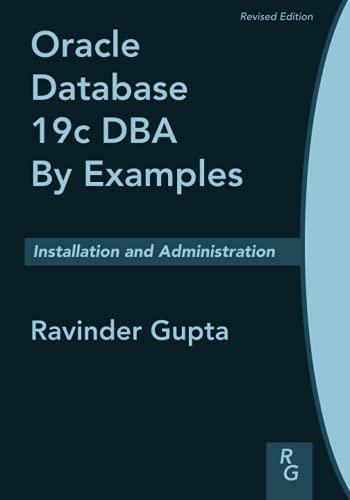Question
-The museum has a collection of ART_OBJECTs. Each ART_OBJECT has an unique Id_no, an Artist (if known), a Year (when it was created, if known),
-The museum has a collection of ART_OBJECTs. Each ART_OBJECT has an unique Id_no, an Artist (if known), a Year (when it was created, if known), a Title, and a Description.
-ART_OBJECTs are categorized based on their type. There are three main types: PAINTING, SCULPTURE, and STATUE, plus another type called OTHER to accommodate objects that do not fall into one of the three main types.
-A PAINTING has Paint_type (oil, watercolor, etc.), material on which is Drawn_on (paper, canvas, wood, etc.), and Style (modern, abstract, etc.).
-A SCULPTURE or a STATUE has a Material from which it was created (wood, stone, etc.), Height, Weight, and Style.
-An ART_OBJECT in the OTHER category has a Type (print, photo, etc.) and a Style.
-ART_OBJECTs are categorized as either PERMANENT_COLLECTION (objects that are owned by the museum) or BORROWED. Information captured about objects in the PERMANENT_COLLECTION includes Date_acquired, Status (on display, on loan, or stored), and Cost. Information captured about BORROWED objects includes the Collection from which it was borrowed, Date_borrowed, and Date_returned.
-Information describing the country or culture of Origin (Italian, Egyptian, American, etc.), and Epoch (Renaissance, Modern, Ancient, etc.) is captured for each ART_OBJECT.
-The museum keeps track of ARTIST information, if known: Name, Date_born (if known), Date_died (if now living), Country_of_origin, Epoch, Main_style, and Description. The Name is assumed to be unique.
-Different EXHIBITIONS occur, each having a Name, Start_date, and End_date. EXHIBITIONS are related to all the ART_OBJECTs that were on display during the EXHIBITION.
-Information is kept on other COLLECTIONs with which the museum interacts: Name (unique), Type (museum, personal, etc.), Description, Address, Phone, and current Contact_person.
WRITE SQL QUERIES FOR FOLLOWING OPERATIONS
Retrieve a name of all ART_OBJECTs' names of a particular type.
Retrieve a list of all ART_OBJECTs' names from a particular Epoch, and type.
Retrieve a list of all ART_OBJECTs' names from a particular artist.
Display a list of all ART_OBJECTs that are part of the PERMANENT_COLLECTION, and show their name, description, type, epoch, and artist.
Display a list of all ART_OBJECTs that are BORROWED, and show their name, description, type, epoch, and artist.
Display a list of all ongoing exhibitions.
Display a list of ART_OBJECTs that are on display on a particular exhibition.
Display a list of ART_OBJECTs that are on display at a particular date.
Step by Step Solution
There are 3 Steps involved in it
Step: 1

Get Instant Access to Expert-Tailored Solutions
See step-by-step solutions with expert insights and AI powered tools for academic success
Step: 2

Step: 3

Ace Your Homework with AI
Get the answers you need in no time with our AI-driven, step-by-step assistance
Get Started


